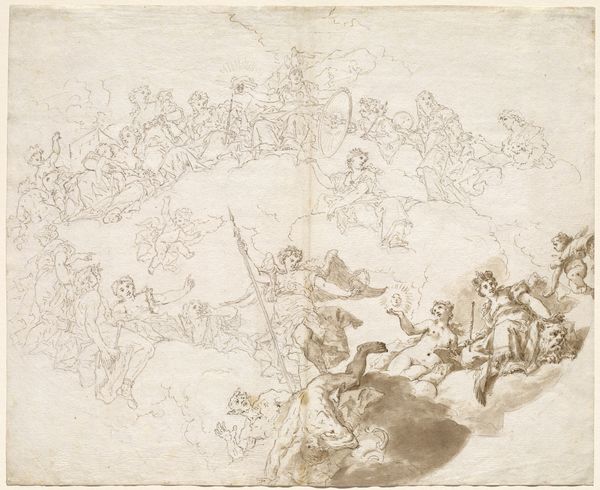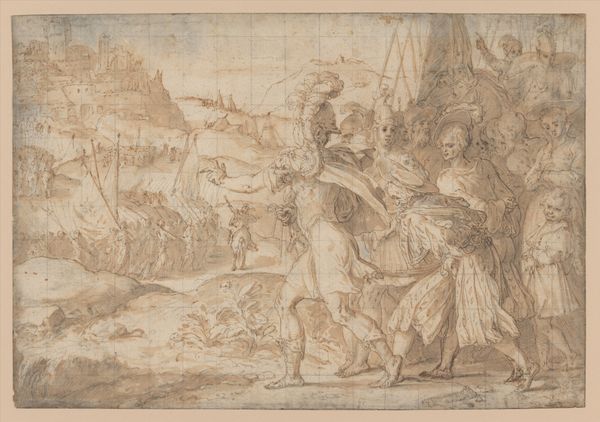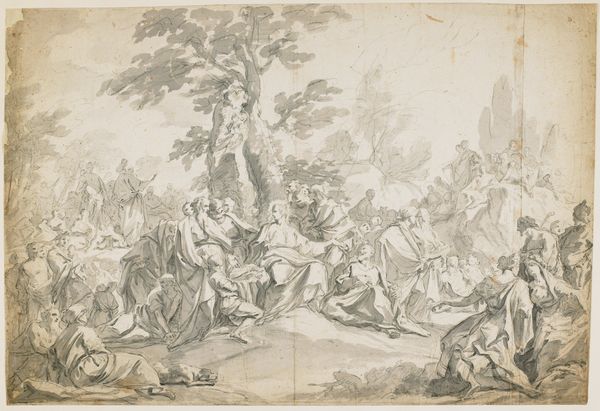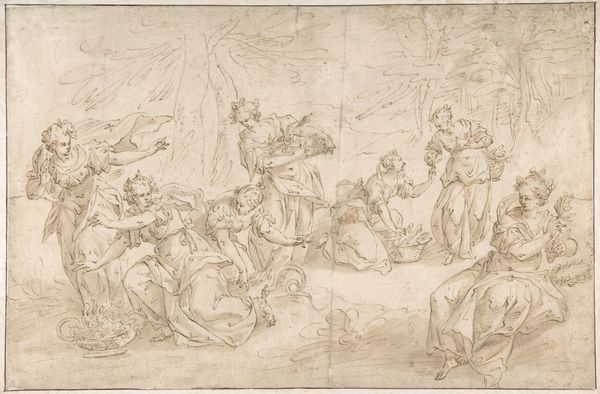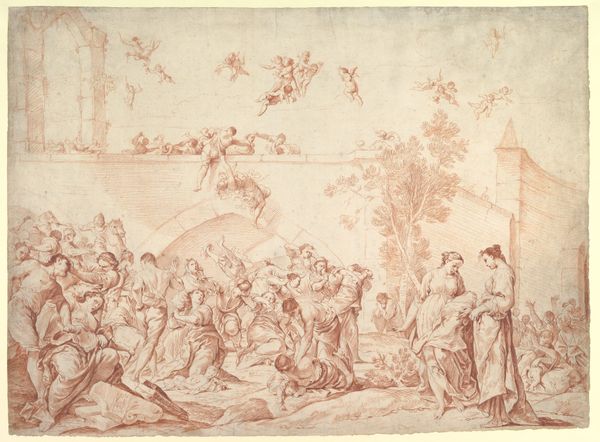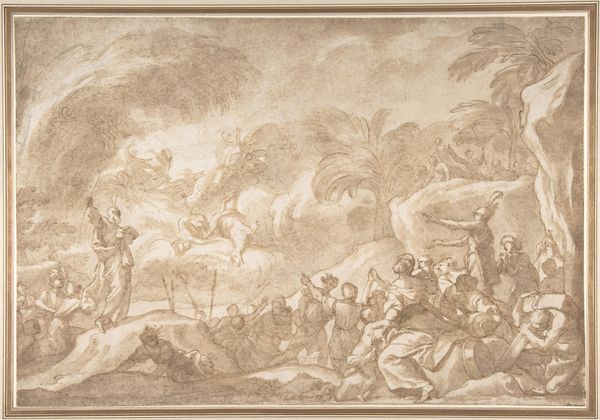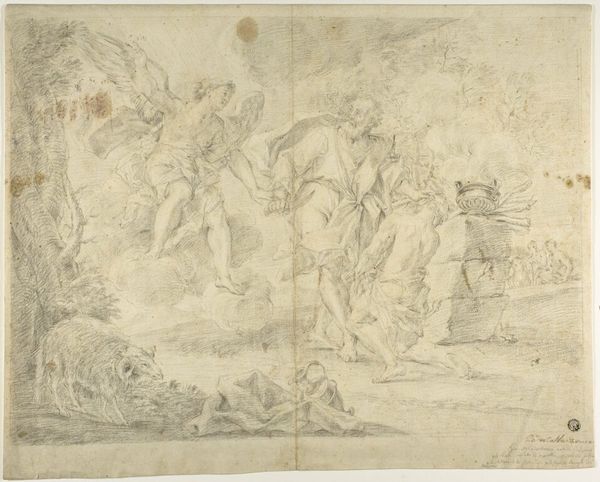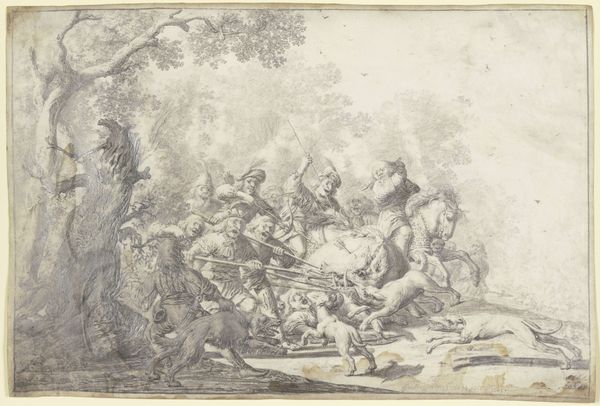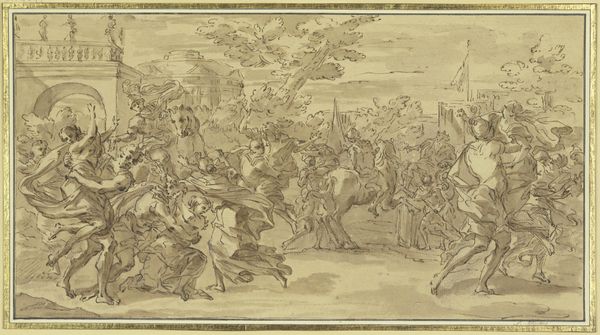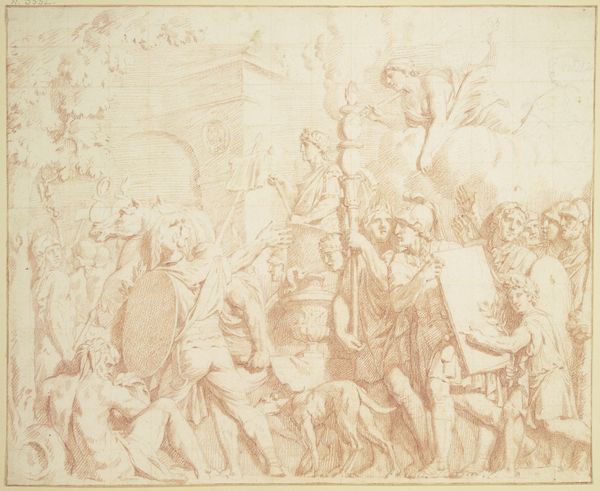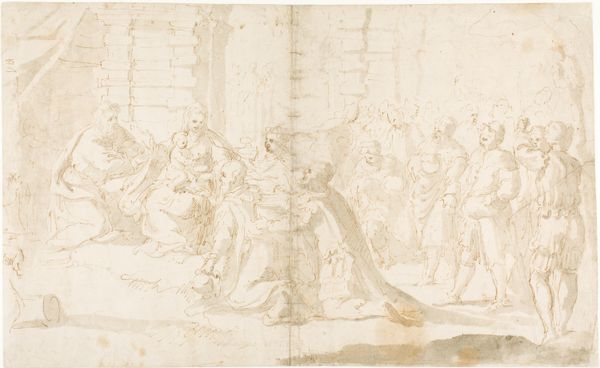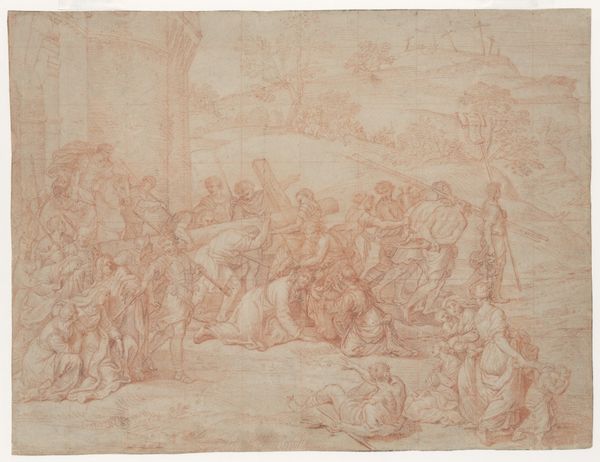
drawing, print, paper, ink, chalk, pen
#
drawing
#
allegory
#
narrative-art
#
baroque
# print
#
etching
#
figuration
#
paper
#
form
#
ink
#
chalk
#
line
#
pen
#
history-painting
#
academic-art
#
italian-renaissance
Dimensions: 265 × 419 mm
Copyright: Public Domain
Editor: This is "Moses Striking the Rock," a pen, ink, chalk, and wash drawing by Luca Giordano. It's held at the Art Institute of Chicago. I'm immediately struck by the sheer energy of the piece. It feels chaotic, with all these figures in motion. What can you tell me about this work? Curator: Well, this frenetic energy you sense isn’t merely chaos, but a purposeful depiction of divine intervention in human affairs. Notice how Giordano uses the figure of Moses, centered and somewhat isolated by the lighter wash around him, to embody the power of God acting on the world. Editor: Moses certainly stands out, but all the figures seem agitated. What’s the emotional story here? Curator: They thirst. The people are desperate. Consider how water, or the lack thereof, resonates as a powerful symbol of life, sustenance, and, in a deeper context, spiritual nourishment. The moment Moses strikes the rock becomes an icon of deliverance. How might this echo in other visual traditions, perhaps concerning different sorts of "miraculous" provisions? Editor: So, this isn't just about people needing water; it's about faith and divine provision in desperate circumstances. Are there visual cues beyond Moses's central position that signal this? Curator: Observe the gaze of the crowd, all focused intently at the rock, their expressions a mixture of hope and anticipation. The artist intentionally contrasts light and shadow, highlighting the rock as a beacon of salvation, much like Caravaggio employed tenebrism. This is a visual tool to elevate the narrative beyond a simple need. It's an emotional appeal, relying on our deep understanding of the relationship between humans and divine providence. Editor: That makes the symbolic weight of the scene much clearer. The light really emphasizes that instant. I hadn't considered that contrast between despair and hope before. Curator: And consider how artists continually recycle and reinvest certain archetypes with new meaning, ensuring these cultural memories endure. Editor: Absolutely, I see now that it's much more than a historical scene; it's a powerful story about faith, survival, and cultural memory!
Comments
No comments
Be the first to comment and join the conversation on the ultimate creative platform.
